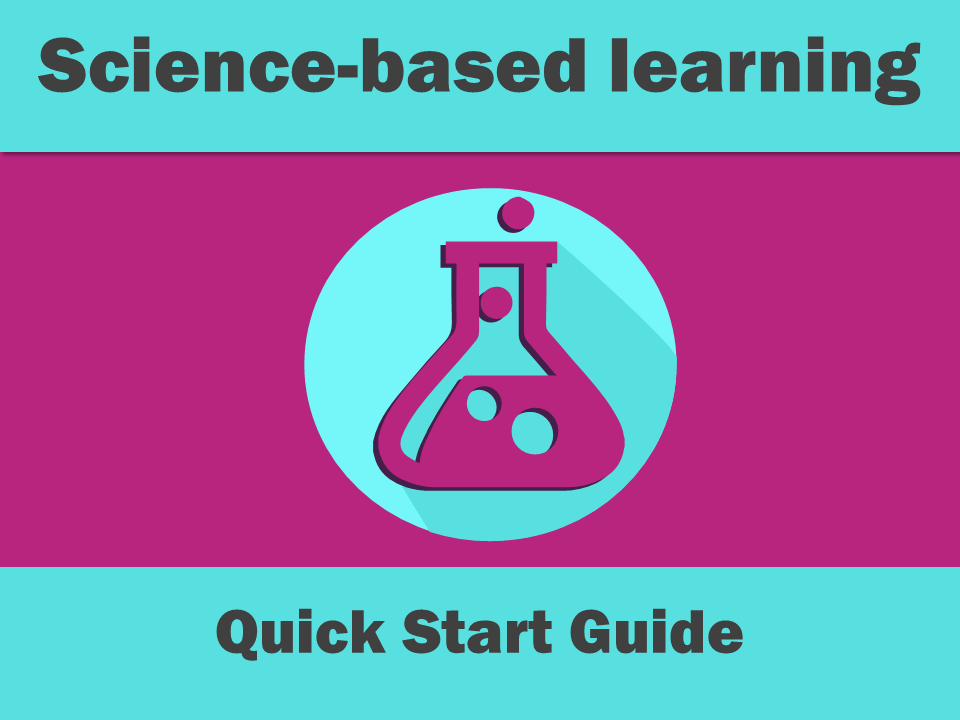
There’s a lot of bad information about how people learn.
Lots of theories…
Lots of trends…
So how do you you what’s a fad and what’s legit?
That’s where the science-based learning folks come in.
Ok. So what the heck is “science-based learning?”
Margie Margie Meacham (a.k.a. “The Brain Lady”) defines it as:
“Science based learning means following the evidence to make decisions instead of following opinion, interest, or preference.”
I had the pleasure of interviewing Margie. In the video below, we talk about the different types of science (e.g. neuroscience vs psychology vs evidence based-practice).
And we discuss about one practical strategy you can implement today (in under an hour) to improve your training programs using science based learning?
1. Learn the basics of science-based learning (25 min)
Check out this 25 minute science-based learning overview interview with Margie Meacham:
Highlights & recap of the interview::
- What is science based learning? Science based learning just means follow the evidence to make decisions instead of just opinion, interest, or preference. When the evidence and tools change you have to be ready to change your practice.
- What’s an example of a theory that we assumed was true, but has been debunked? “Learning Styles,” the idea that we should adapt our learning approach to people’s prefered method of learning (e.g. visual to visual). Turns out not true. We do have preferences (true), but focusing on that prefernce actually doesn’t promote learning. You’re better off using them all.
- What are the benefits of science based learning? As learning professionals, we do a lot of things well because our instincts are good. But having the research gives you the case to make when you have a stakeholder pushing a different direction. It’s about being intentional and being able to choose the actions better and most effective for what you’re trying to do. You can only do that when you know the science.
- 2 easy ways to implement science-based learning in your programs
- Concept # 1 Neuroplasticity: You actually can change as you get older. And knowing that you can change actually increases learning. If an older person in the training says they’re too old to learn, you can take 5 minutes to explain that brain science supports that they can actually still learn. Subconsciously, they will learn more. Pretty cool!
- Concept #2: Science of evolution and how brain developed. The purpose of the brain is to keep you alive. Subconsciously, learners are always scanning environment for danger. Learners can never 100% be there. So don’t only tell people something once. You need to repeat, repeat, repeat. Bring it in through as many formats as you can. You’ll widen neuro-pathways in the brain to the same information and make it stick!
2: Take action on Concept #2 above “science of evolution”
I created a detailed guide of how you can repurpose content here:
How to repurpose content in under an hour
3: Read these 3 Articles from Margie
4: Follow Margie in these ways
Margie has a ton of great content:
- Margies site: LearningToGo
- Sign up for Margie’s newsletter
- Check out Margie’s blog
- Check out her podcast
- Follow her on Twitter
- Buy her book
5: Check out Margie’s reading list
Brain Science Books:
- Brain Matters (Margie Meacham)
- Brain Rules (John Medina)
- Triggers (Marshall Goldsmith, PhD.)
- The Owner’s Manual for the Brain ( Pierce J. Howard, Phd.)
Evidence-based Practice books:
- Make it Stick: The Science of Successful Learning (Brown, Roediger, McDaniel)
- eLearning and the Science of Instruction (Clark & Mayer)
- Design for How People Learn (Julie Dirksen)
- Visual Design Solutions (Connie Malamed)
- Visible learning and the Science of How We Learn (Hattie & Yates)
- Multi-media Learning (Mayer)
- Cambridge Handbook of Multi-media learning (Mayer)
Reminder: Don’t forget to take action on this trend here
Quick Start Guide to Repurposing Content
And don’t forget enter the giveaway for a chance at winning the free books!


